
Sure, we talk a good game about making innovation an instinct and change a reflex. But that wouldn’t add up to much if we weren’t actively walking the talk every day.
In this series, we’ll be heading behind the scenes at ExperiencePoint, introducing you to some of our team members and showing you how they’re using the principles of ExperienceInnovation and ExperienceChange to get game-changing results in their own areas and across the business.
What does the marketing team at ExperiencePoint do when it’s facing the dreaded blank page? In true design thinking fashion, it brings in some extra brains!
This behind-the-scenes-at-ExperiencePoint story unfolded as our marketing team began exploring ways to more effectively engage today’s time- and attention-strapped audiences.
Ross Tom, ExperiencePoint’s Head of Marketing, had determined that storytelling, particularly in video form, would be an important part of our marketing strategy for 2017. But the question on the table was, what should we talk about?
When he and Marketing Associate Joe Di Noto sat down to that blank piece of paper, they realized that they might benefit from a broader view, particularly since video has the potential to add value in all pockets of the company.
Here’s the story of how Ross and Joe galvanized the team to come up with ideas, and how 80+ sticky notes became the building blocks of a rich, inclusive, human-centered editorial calendar.
What was the motivation behind this effort?
Ross: We know that we’re competing for our audience’s time and attention, so we’ve been exploring different ways to engage them. We determined that video storytelling would play a big role for us going into next year, but we needed to decide what topics we’d cover. In true design thinking form, we thought, why not have a brainstorm instead of just Joe and Ross coming up with these ideas in a vacuum? It gave us an inclusive way to come up with concepts.
Joe: We also didn’t want to fall into the trap of doing video for video’s sake. We wanted to make sure that what we create adds value— to our audience and to the team. Everyone in the company is active on social media and engaging with customers, so video is something anyone might use. And that thought process led us to our How Might We statement: How might we add value to each team through video?
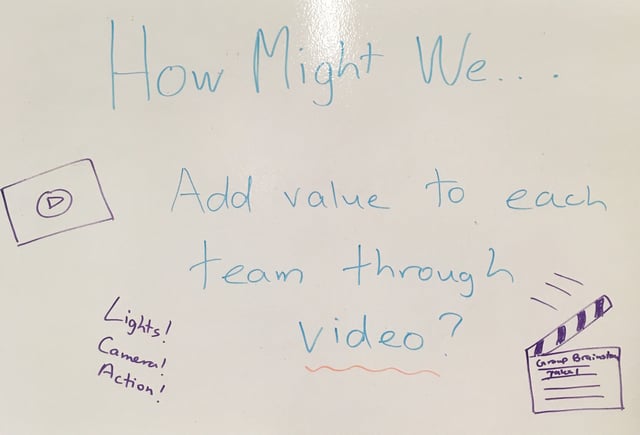
So you invited the entire company to participate?
Ross: Yes. About a week and a half before the scheduled brainstorming meeting, Joe sent out a calendar invitation to everyone in the company. It was just a very brief general overview and the How Might We statement.
But there was a lot more planning going on leading up to that meeting, right?
Ross: Definitely! It’s easy to create a brainstorm; it’s not easy to create a good one! Joe and I did a lot on the front end to make sure it would be successful. We also knew we wanted to present the marketing plan in early September, so we had to time it right in order to meet that milestone.
Tell us about some of the things you did to make sure the brainstorming would be successful.
Joe: Here’s a pro tip: Schedule it around lunch! That helps with turnout! We were also very intentional about the setup. We held the brainstorm in our learning garage, and we went early to set up the room.


Ross: We knew we wanted to document the process, so we had a plan to take photos. We were clear and organized with markers, Post-its, white boards—everything was planned out.

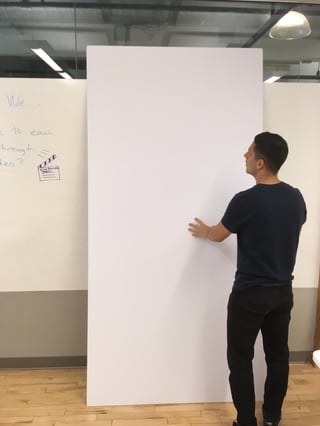
So what happened during the brainstorm?
Ross: We had 15 people participate in the 20-minute session, 15 minutes of which were spent on brainstorming. The facilitator introduced the rules, guidelines and How Might We statement, and then everyone dove in to the challenge. People were super energized. They came up with 6 or 7 ideas each—funny ideas, cool builds and more. They were thinking not just about their own teams but also how it could benefit other teams, too.


Joe: After a few rounds, a Senior Business Partner suggested that everyone switch places in the room after putting their ideas on the board. It really made a difference! There was a huge burst of ideas after that.

What was the output of all that energy?
Ross: At the end, we had more than 80 sticky notes, and from that, about 70 video ideas. People were very thoughtful. They came to the session with ideas, and those existing ideas then evolved. There were so many good ideas that Joe decided to categorize them and look for themes so we could narrow it down. It was a massive diverging activity that we needed to converge to make it real.
Joe: We ended up with three categories: Inform/Educate, Delight and Compel.
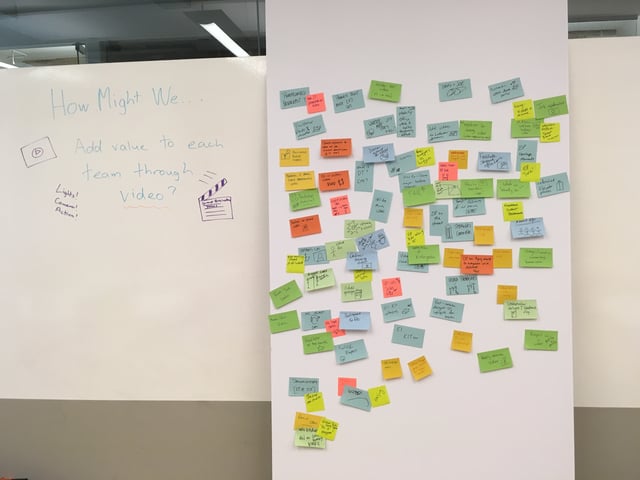
How do you tackle 70 videos?
Ross: Exactly! There are only two of us, so we had to think about feasibility—what is really doable?
Joe: That process turned into the ultimate editorial calendar meeting. We laid out all the sticky notes on the kitchen table to visualize how much work would need to be done each month, including video content as well as other content. It’s one thing to think about it, but to see it laid out in front of you like that gives you an entirely different perspective on it.
Ross: Then we were able to look at it and say, “OK, we know those ideas are good. What can we realistically execute on with quality?”Joe had the idea to look at what concepts we could start prototyping immediately to start building our muscle. We whittled it down to 12 videos within 4 or 5 different series or content themes. We then created “lite” storyboards of what the content would look like. They were fairly lengthy, though, because we wanted to “give each idea its day.”
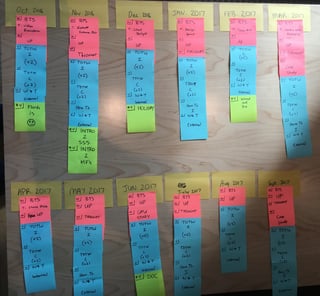
So then it was time to present your plan?
Ross: Yes, and that editorial calendar we created with sticky notes in the kitchen was essentially the final prototype. About 80% of it became the slide that we presented to our Co-Founders and Managing Director for approval. They gave us the thumbs up, and now we have to work the plan!
Joe: It’s ambitious, but we know from a workflow standpoint, video is not going to happen if you’re not intentional about it.
Any lessons learned from the process?
Ross: A key to good brainstorming is framing. And true to the design thinking philosophy, it has to be inclusive. Because we played the role of aggregator, this process gave us a lot of confidence that people will like what we ultimately create, and so they’ll celebrate it and use it.
Joe: They’ve also turned into the most enthusiastic idea generators ever. We’ve approached them to be involved in aspects of the videos going forward, and they’re always willing. They’re saying, “What can I do to help?”
Ross: And these are just the planned videos. Now that it’s got people thinking about video, we’ve noticed that ideas about how video could be used in other aspects of our work are coming up a lot more in conversation.
How would you describe the editorial calendar and plan you ended up with?
Ross: It’s a rich tapestry of content—with written and video complementing each other—to ensure the right message, right audience, right timing and right medium. And yes, we really will be producing dozens of videos in 2017!
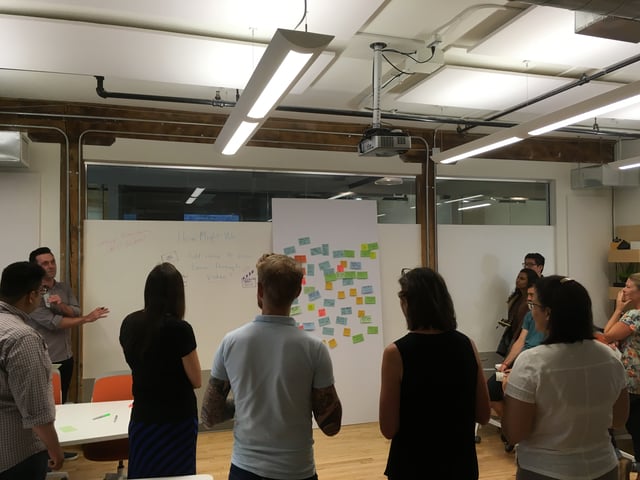
Stay tuned for more stories from behind the scenes of innovation and change!